#a.d. 50
Text
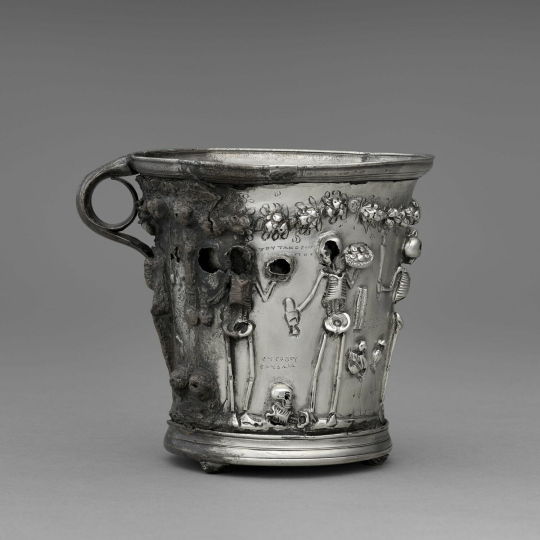



~ Treasure of Boscoreale: Goblet with Skeletons
Date: 25 B.C-A.D. 50
Period: Imperial Period
Culture: Roman
Place of origin: Italy, Boscoreale (Villa de la Pisanella)
Medium: Silver
#ancient#ancient art#history#museum#archeology#roman#ancient history#goblet#treasure of Boscoreale#goblet with skeletons#skeletons#imperial period#25 b.c.#a.d. 50
2K notes
·
View notes
Text





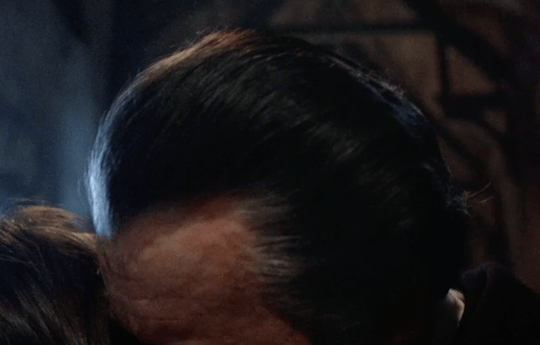


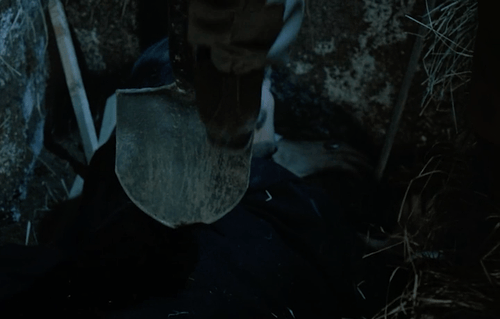
Dracula A.D. 1972 | 1972
399 notes
·
View notes
Text
Hi, I’m A.D., I’m a historian, and let’s talk about the nuclear bomb and why the one that exploded at the end of QSMP’s Purgatory Event probably didn’t kill all that many people upon initially exploding.
The nuclear bomb, as everybody knows, has only ever been used in a war twice. Both explosions were caused by the United States in their war against Japan at the tail end of World War Two in one final terrible last ditch attempt at ending the war through any means necessary.

Pictured above are the atomic explosions at Hiroshima (left) and Nagasaki (right.)
These are big huge clouds, which makes sense! Nuclear weapons, on average, have the strength of somewhere between 10 and 50 megatons of TNT. Hydrogen bombs, meanwhile, are WAY worse, with the first test coming in at a whopping 10 MILLION tons of TNT.
To put it in Minecraft terms for all you nerds out there, imagine Doomsday from the Dream SMP and how it razed an entire nation to bedrock level by using somewhere in the range of 20 stacks of TnT (if I’m remembering correctly.) A nuclear bomb, in these terms, would have blown L’Manberg up something like eight times over and then some.
So that’s. Bad. Right?
Well, here’s the QSMP’s bomb as was constructed by our favorite depressed detective, q!Maximus:

This bomb, notably, is underground. It was never dug up, it was just moved somewhere else. It isn’t above ground, and it never left this room. Watch the cutscene back (linked here), the bomb never left the room.
So this is where underground nuclear testing comes in.
Underground testing began in 1951, and it remains the only form of scientific nuclear testing not banned by the Limited Test Ban Treaty of 1963.
No big surprise, a lot of early underground tests were conducted by the US out in Nevada, where they kinda tested nukes legit fucking EVERYWHERE in the desert for a long time. Below are some photos, just for funsies:

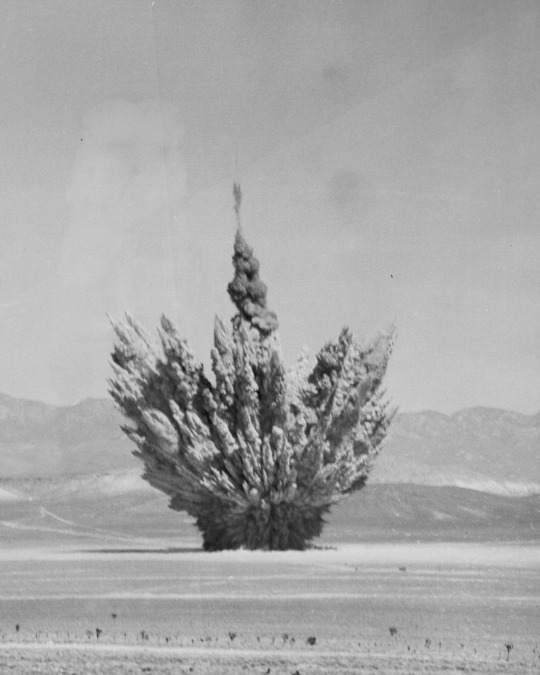
What’s important about underground nuclear explosions is that they actually end up releasing less radiation into the atmosphere than regular nukes do. What happens beyond that depends on whether or not the radiation remains contained.
A contained explosion’s aftermath:

And an uncontained explosion’s aftermath:

There hasn’t really been many negative biological effects reported from these underground tests, which is really saying something considering how close to nuclear blasts the US had its guys at most of the time (see below)

The worst you got out of the underground tests was some radioactivity in cows’ milk, which is NOTHING compared to the effects of the above-ground nuclear testing at the Nevada Site:

So… what does this mean for the QSMP?
Well, if we’re going off of historical and scientific precedent, legitimately nothing substantial happened to the islands of Purgatory. There’s more of a risk of dying from the pre-established radioactive rain disaster effects as well as the earthquake and meteor disasters.
Fun fact! Underground nuclear explosions usually registered as weaker than actual fault line activity, aka actual earthquakes.
If Maxo’s nuke was dropped from above, the devastation would be greater. Nuclear fallout is no joke; even today, cancer rates in the American West are still pretty high from the above-ground testing conducted at the Nevada Site. The Bikini Atoll will never be the same after all the testing the US did there, either.
But, because this nuke seemed to have gone off underground, I can safely assume that the damage done to the islands above was minimal at worst. Maybe there’s a radioactivity leak, but everybody staying on the islands had already experienced radiation up to that point.
It’s important to remember this because several characters did stay behind on the islands, and the fandom is assuming them dead because, well. A nuke went off. But those characters aren’t dead yet (outside of q!Maxo, who was possibly directly above the nuke when it went off and thus would’ve been hit full-force by the explosion.) Many were on the beach, far from the the nuke. They’re fine, and you can prove it with history!
TLDR; the nuke from the end of Purgatory was assumedly set off underground, which would have negated a lot of its potential damage, so everybody’s fine except for the unfortunately deceased q!Maxo
409 notes
·
View notes
Text

2,000-Year-Old Roman Mausoleum Unearthed Near London Bridge
No burial artifacts were recovered from the structure itself, but the surrounding area yielded over 80 Roman burials containing copper bracelets, coins, glass beads and a bone comb.
A "completely unique," 2,000-year-old Roman mausoleum that has emerged from the rubble of a development site in central London is the most intact ever discovered in the U.K.
The monumental tomb — of which low walls, entrance steps and interior flooring remain — is bejeweled with two mosaics composed of small red tiles, each featuring a flower enclosed in concentric circles. More than 100 coins were also strewn across the tomb's floor.
Archeologists only found the second mosaic when they dug beneath the first one. This indicates the mausoleum floor was raised at least once while it was still being used for burials, they said.
The discovery, which is nestled within the city's central Southwark area, "provides a fascinating window into the living conditions and lifestyle in this part of the city in the Roman period," Antonietta Lerz, a senior archeologist at The Museum of London Archeology (MOLA), said in a statement.
Roman invaders under Emperor Claudius founded London, or Londinium, around 47 A.D. and ruled the city through to the early fifth century, when dwindling military resources and incursions across the rest of the empire forced their withdrawal from Britain.
The recent excavation bears the marks of this decline. "This relatively small site in Southwark is a microcosm for the changing fortunes of Roman London — from the early phase of the site where London expands and the area has lavishly decorated Roman buildings, all the way through to the later Roman period when the settlement shrinks and it becomes a more quiet space where people remember their dead," Lerz said.
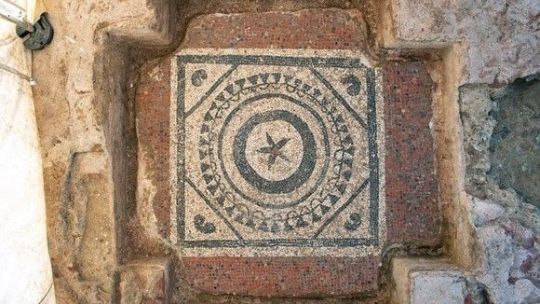

The mausoleum would have originally housed coffins and other burial artifacts, according to the statement, but none were recovered from the structure itself. However, the excavation site around the monument yielded Roman-era items belonging to more than 80 burials, including copper bracelets, glass beads, pottery and a bone comb.
Archeologists will now examine these recovered items to better understand central London's Roman past.
Only the wealthier members of society would have had access to the mausoleum, which may have been used as a family tomb or belonged to a "burial club," requiring a monthly fee to secure a future grave, according to the statement.


What remains of the structure indicates that it was a two-story building with large buttresses in the corners for support. The high walls were probably dismantled for reuse elsewhere during the medieval period. Inside, a raised platform cemented with pink mortar containing crushed bits of pottery and brick — a widely used Roman building material known as "opus signinum" — designates where the burials would have taken place around three sides of the mausoleum.
The discovery follows that of a 26 foot (eight meter) long Roman mosaic — the largest unearthed in London for more than 50 years — in February 2022. The newly excavated mausoleum will be put on public display once construction has concluded, according to the statement.
By Sascha Pare.


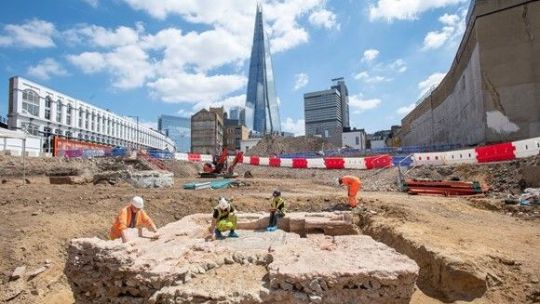
#2000-Year-Old Roman Mausoleum Unearthed Near London Bridge#roman mosaic#ancient grave#ancient tomb#ancient mausoleum#ancient artifacts#archeology#archeolgst#history#history news#ancient history#ancient culture#ancient civilizations#roman history#roman empire
327 notes
·
View notes
Photo
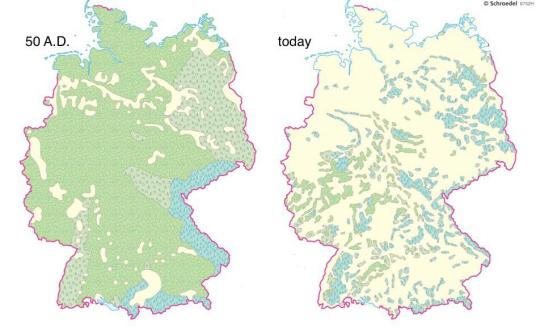
Forests in Germany, 50 A.D. vs today
885 notes
·
View notes
Photo
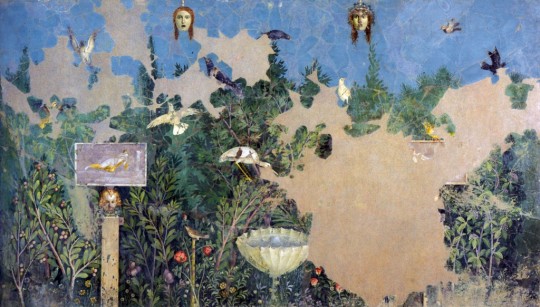
Unknown, Garden fresco, Pompeii, House of the Golden Bracelet, 25–50 A.D., Soprintendenza Archeologica di Pompei, © Fotografica Foglia (Naples).
432 notes
·
View notes
Text


Cubiculum (bedroom) from the Villa of P. Fannius Synistor at Boscoreale. Roman ca. 50–40 BCE. x
Room M of the Villa of P. Fannius Synistor at Boscoreale, buried by the eruption of Vesuvius in A.D. 79, functioned as a bedroom.
The rear wall shows rocky terrain with balustrades and an arbor above, a small cave or grotto sheltering a fountain, and a small figure of Hekate below. In the center of the wall, between two columns, a parapet embellished with a yellow monochrome landscape supports a glass bowl filled with fruit.
The side walls of the room are symmetrical. Each wall is subdivided into four sections by a pilaster that defines the area of the couch and by two ornate columns. The paintings depict enclosed courtyards in which we glimpse the tops of statuary, rotundas, and pylons as well as vegetation. These precincts alternate with townscapes combining colonnaded buildings and projecting terraces.
148 notes
·
View notes
Text

Researchers and monster hunters are gathering in the United Kingdom's Scottish Highlands this weekend to look for the eternally elusive Loch Ness Monster, the biggest search for the legendary beast in more than 50 years.
Somewhere beneath the shimmering surface of Loch Ness lies Nessie, the legendary sea beast whose reputation spans nearly 1,500 years — at least, that's what monster hunters and Nessie enthusiasts from around the world hope to prove Saturday and Sunday.
The Loch Ness Centre and the research group Loch Ness Exploration are asking all aspiring monster hunters to join in on the biggest search since 1972.
"Our purpose is to observe, record and study the natural behaviour of the Loch and phenomena that may be more challenging to explain," the Loch Ness Exploration Facebook page reads.
"If you believe that the Loch Ness Monster exists then we invite you to join the search, we equally invite you to support the study of the Loch and the natural behaviour of the elements that may be the root cause of these strange reports from Loch Ness."
Investigators are breaking out all sorts of technology, including surveying equipment the Loch Ness Centre says has never been used on the freshwater lake before.
Drones with infrared cameras will fly over the lake and a hydrophone will be used under the surface to detect "Nessie-like calls," the Centre says.
Volunteers will also participate in a large surface watch of the loch, scanning the surface for any irregularities.
However, due to an "overwhelming demand" from enthusiasts, the group is no longer accepting applicants hoping to participate in person.
But the Loch Ness Centre says those still eager to participate can do so virtually through a livestream.
At 22 square miles and with a maximum depth of 788 feet, Loch Ness is Great Britain's largest lake by volume and second-largest by surface area, according to Encyclopedia Britannica.
Though the first written accounts of a monster are attributed to the Irish monk Saint Columba's encounter in 565 A.D., reports of a creature in the lake are depicted in ancient stone carvings found in the area.
But the legend of a monster lurking in the loch didn't garner greater attention until April of 1933, when a couple driving along the newly built road around the lake saw an animal they compared to a "dragon or prehistoric monster," according to the Scottish Maritime Museum.
More sightings soon followed, and big game hunter Marmaduke Wetherell was commissioned to track the monster down in December of 1933.
He said he found large tracks along the shoreline, but zoologists at the Natural History Museum debunked the tracks.
The following year was when English physician Robert Wilson took a photo, now known as the "Surgeon's Photograph," which appeared to show Nessie's head atop a long slender neck poking out of the water.
The picture was printed in the Daily Mail and the Loch Ness Monster was thrust into international stardom.
One of the participants in that search confessed on his deathbed that the picture was staged, according to the Daily Mail.
The Loch Ness Centre says there have been more than 1,140 official Nessie sightings.
Paul Nixon, the Centre's general manager, said he's excited to see what turns up after the waters are searched like never before over weekend.
"We are guardians of this unique story," Nixon said.
"And as well as investing in creating an unforgettable experience for visitors, we are committed to helping continue the search and unveil the mysteries that lie underneath the waters of the famous Loch."
#Loch Ness Monster#Scottish Highlands#Loch Ness#Nessie#Loch Ness Centre#Loch Ness Exploration#Saint Columba#Scottish Maritime Museum#Marmaduke Wetherell#Natural History Museum#Robert Wilson#Surgeon's Photograph#Daily Mail#Paul Nixon
62 notes
·
View notes
Text
🐘 vdB 142, also known as the Elephant's Trunk Nebula due to its unique shape, is a dark globule of gas and dust within the much larger emission nebula IC 1396 in the constellation Cepheus, about 2,400 light-years from Earth.
✨ vdB142 is a fascinating region in space, known for its intricate structures formed by the interaction of new stars with their surrounding molecular clouds. As a site of active star formation, vdB142 is a dense column of interstellar matter that's being shaped and eroded by intense radiation and stellar winds from nearby massive stars. This radiation causes the brighter edges of the trunk to glow, while the denser regions shield the interior, creating dark silhouettes. #stars
🔭 We the #Astrophotography enthusiasts enjoy the vast amount of H-alpha light emitted from there, which clearly reveals the nebula's distinct shape and the contrast between the bright emission regions and the darker dust lanes, see my image below.
🏛️ In 79 A.D., some 300 years later, as the light from vdB142 began its journey, and this is the light we are witnessing with our astronomy cameras tonight while photographing it, Mount Vesuvius in Sicily 🇮🇹 erupted, burying the Roman city of Pompeii in ash and pumice and preserving it for centuries.
Image by @xipteras, #NP127is telescope, QSI-683ws8 CCD camera, Hα filtering, ~50 minutes integration time.

53 notes
·
View notes
Text
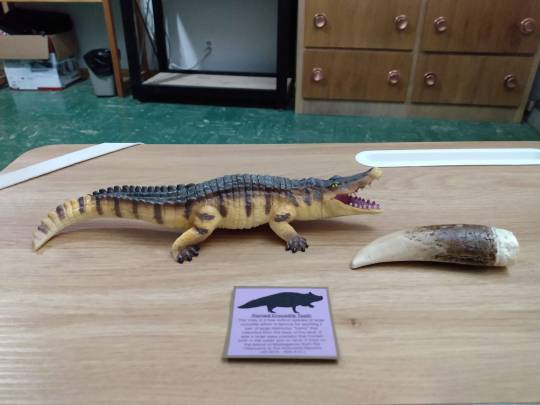



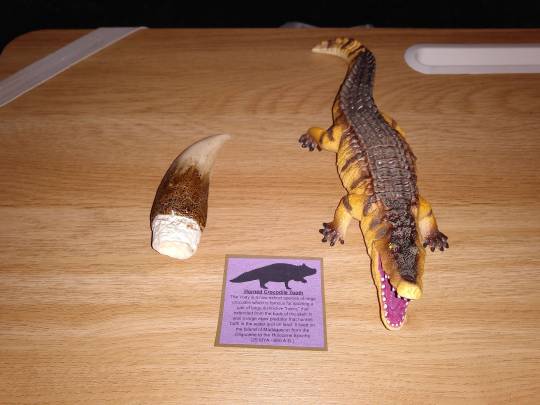

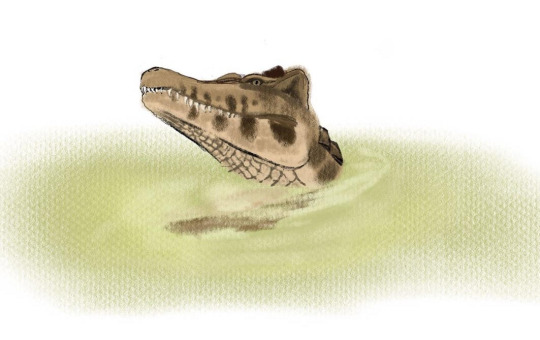

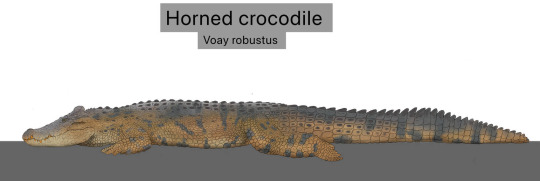

Todays fossil is a replica Voay tooth. Also known as the horned crocodile, the voay is an extinct genus of crocodilian which lived throughout swamps, rivers, wetlands, and coast regions of Madagascar until as recently as 50 A.D. It is on this massive island that the voay lineage became isolated and split off from crocodiles back in the Oligocene some 25 million years ago. Reaching upwards of 16ft (5m) in length and 500lbs (226kg) in weight the voay is the largest predator known to have roamed Madagascar since the extinction of the non avian dinosaurs and would have feed upon Fish, Birds, Amphibians, Fruit, Mammals, Invertebrates, and Other Reptiles. It sported a sorter and broader skull than most modern crocodiles with a distinctive pair of boney head crest. It also had much more robust, strongly built legs indicating that the voay likely spent almost as much time on land as it did the water. Admittedly inaccurate Toy made by creatology.
Art Belongs to the following creators:
Sobek1926: https://www.deviantart.com/sobek1926/art/Voay-robustus-the-horned-crocodile-of-Madagascar-936382947
Unenlagia90: https://www.deviantart.com/unenlagia90/art/Voay-robustus-918530868
Nixdraws: https://nixillustration.com/science-illustration/2019/voay/
#pleistocene#pleistocene pride#pliestocene pride#pliestocene#extinct#madagascar#crocodile#crocodilian#oligocene#voay#horned#horned crocodile#africa#paleontology#paleoart#cenozoic
27 notes
·
View notes
Text


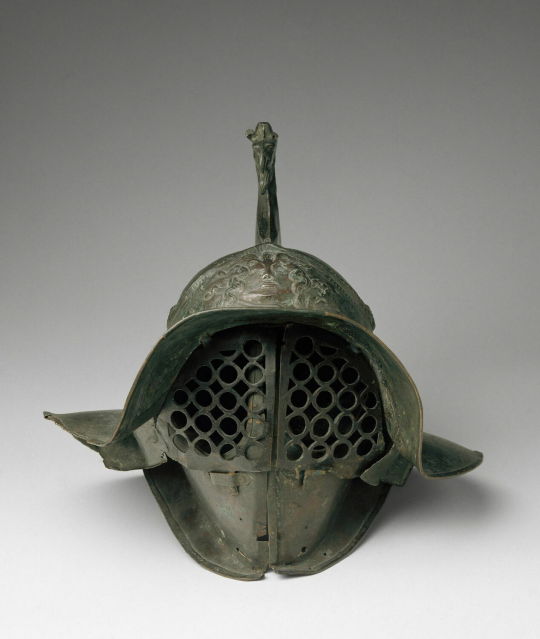
~ Gladiator Helmet.
Date: A.D. 50-75
Place of origin: Campania
Place of origin: Pompeii - 1767 (barracks of the Gladiators)
Medium: Bronze, silver
#ancient#ancient art#history#museum#archeology#ancient history#archaeology#pompeii#gladiator#gladiator helmet#helmet#campania#bronze#silver#louvre#a.d. 50#a.d. 75
2K notes
·
View notes
Photo

Black-Ground Fresco Fragment with Landscape in Tondo, A.D. 50–79
The J. Paul Getty Museum
210 notes
·
View notes
Text
OC SHOWCASE #0
HYVANN: Gyganos soldier

Origins
=3044 A.D. the 30th Gaian Century=
Humanity was the in the middle of a great era, an era of understanding, growth, and independence thanks to the efforts and sacrifices of many across the years. From this prideful spirit came the desire to venture into the many unknowns that besieged our world and beyond, with one of the first steps being earthbound in origin, the formation of the Southern Cross government in the Antarctic continent of the South Pole; from which many scientific studies and expeditions across the icy caps and snow filled fields of the pole were carried out by insightful scholars in the field. Unfortunately...this desire would prove to be one of the first steps into a drastic shift for our race and our future...
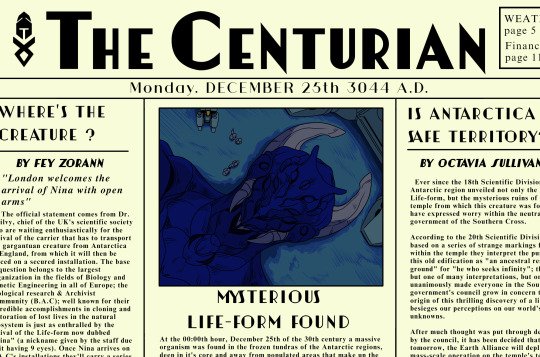
In the Eve of Christmas, a group of scientists would uncover...a creature of great size, and with it a forgotten den...a temple, filled with never-to-be-seen markings and artifacts that belonged to an unknown civilization! Like locusts they took what they could to their homelands for further inspection outside the harsh Antarctic soil, unknowingly triggering the rise of a foreboding force of great power and vile design.
Much to the terror and dismay of the science division of the UK plus the company backing them up, "Nina", their so-called mistress of secrets..woke up from a prolonged slumber and wasted no time in bringing fire and ash to these foolish humans. Simultaneously via a special telepathic/Synaptic link...triggered a special command to the temple to rise back up in the South Pole! The Swarm known to this day as the ZARKRYGON had thus made contact with humankind and has turned the once "prosperous" city of London and most of the UK into a Hive fortress, and so was the South Pole with the rise of their Babel-ish Tower of Bioengineering.
In response, plus several alliances forged for the salvation of Earth, from which the past was brushed off, would see the kickstart of Project Talos; from which the Gyganos Soldier Battalions were formed and deployed across the globe as the ultimate force of defense and offense against the many odds stacked against them by the Zarkrygon Swarm!
The Gyganos Soldiers
[PS: Due to the highly secretive nature of their development, most if not all of the information regarding to their origin is highly secured and only accessable for high command, so unfortunately we won't be able to learn the creation, therefore birth of these Mecha Goliaths and therefore Hyvann's birth]

•Height: 100 [approximately]
•weight: 737 [approximately, without equipment]
•Occupant Accommodation: none
•Physique/build: outside of their bulky appearance seen in combat, one of the most interesting details about them is that behind their Masker Plates..hide an androgynous visage that we can't quite pin down why was this design applied in the first place [we can't deny however that it ain't pretty or awe inspiring to see].
•Equipment: [we only have data in regards to standard equipment, but suffice to say that it is known that they have more than what you see here]

•Speed: Despite their bulky and clunky appearance, the Gyganos Soldiers are fast troopers, often throwing off enemies by the fact that something that hulking shouldn't be moving "that fast" on the battlefield! [Speed: Approximately 50-70 km sprinting]
•Strength: still to be determined/ambiguous, but they definitely pack a strong punch! Stronger than any known artillery or machinery in Earth's history and of course surpassing humans by design.
Hyvann [Pronounced as Hi-van]
Hyvann comes from the 118th Battalion known as "Leviathan", as previously said their origin/birth is unknown/classified outside of the propaganda/news coverage which claims "the Gyganos Army are the culmination of Engineering and A.I., all in perfect synchrony to build the ultimate warrior against the ultimate foe." What we do know well about Hyvann is somewhat of a shared trait the Gyganos Army have with each trooper, that is a life-like personality but for Hyvann's spotlight in this file we know that they're a modest, grounded, and introspective individual, composed even in the most harshest of environments; however that doesn't mean they won't just idle and when the moment presents itself, they can dish-out a rather "snarky callback" on the scene, a juxtaposition between being humble and poised.
Unfortunately, that's where we'll end this file by wishing Hyvann and their Battalion the best of luck.
Godspeed, and may Gaia light your way...
Behind the Scenes
•The Gyganos Army/Hyvann, their aesthetic is heavily inspired/influenced by the incredible work of Mech/Art Designer Makoto Kobayashi of Dragon's Heaven & Armored Core fame, going with that blend between Biology and Machinery that in the end produce a dream-like yet functional fusion with his Mecha; all in part thanks to French Artist Moebius being an influence seen in his illustrations.
•Hyvann, if described with all honesty is essentially my take on Shaian from Dragon's Heaven, that mellow yet big presence, almost like having a "big mech papa" or "chunky bud" if that makes sense [unless you've seen the OVA].
•In-Universe Newspaper snippet: I added a shout-out to DeviantArt artist & good buddy of mine, Feyzer for being a great dude in helping me out whenever I advance on my Original Works; he came up with the nickname "Nina" for this <X)
Link to his page if you want to check him out
[PS: I will make a post exclusively focused on the Zarkrygon and "what we know about them so far"]
I'm open for honest feedback and your thoughts on the comments below ^u^ 👇
#artists on tumblr#oc#oc art#oc artwork#original character#my ocs#my oc stuff#my ocs <3#Hyvann#Zarkrygon#Gyganos Army#Leviathan#mecha art#mecha#giant robot#giant mecha#moebius#makoto kobayashi#Dragon's Heaven#armored core#daikikaijuboyo028
8 notes
·
View notes
Text

gold and enamel earring with hathor and rosette
meroitic period, nubia, meroe, c. 90 b.c. –50 a.d.
boston museum of fine arts. 23.341
37 notes
·
View notes
Text


Rare Coins and Treasures Discovered at Greece’s Ancient City of Tenea
Archaeologists in Greece discovered a hoard of rare ancient coins and other treasures at the ruins of Tenea, near Corinth, a city that was built by Trojan prisoners of war.
The Ministry of Culture announced on Tuesday that the recent excavation unearthed 29 silver ancient Greek coins dating from the late 6th century.
Several are among the rarest and most historic coins of ancient Greece, the ministry says.
Rare silver coins unearthed at Tenea
They include three staters of Elis minted at Olympia during different Olympic Games, staters of Aegina with a land instead of a sea turtle, staters of Stymphalos, Argos and Opuntia Lokron, as well as staters of Thebes from the 5th century BC depicting Hercules suffocating two snakes with his hands.
The stater, as a Greek silver currency, first as ingots, and later as coins, circulated from the 8th century BC to AD 50. The earliest known stamped stater (having the mark of some authority in the form of a picture or words) is an electrum turtle coin, struck at Aegina that dates to about 650 BC.
The treasure is linked to the finds of cult use (female and animal figurines, miniature vases and others) that were identified last year and continued to be identified this year, giving a clear ritual character to the areas that are revealed the announcement says.


Other stunning discoveries
The excavations at Tenea also revealed a section of Hadrian’s aqueduct, determining the course of one of the largest hydraulic works of the 2nd century. A.D. in Greece.
Also, part of the prehistoric settlement of Tenea, dating to the Early Bronze Age II (2,600 – 2,300 BC), was identified and excavated, confirming the area’s habitation before the fall of Troy.
In addition, a rich building complex from the late Archaic times to the Hellenistic times was revealed, with individual areas of cult use between them and three extremely well-maintained tanks, one of them with a descending-ascending scale.
The new excavations brought to light dozens of ancient pots and figurines.


The ancient city of Tenea in Greece discovered in 2018
According to Greek mythology, Tenea was established by Trojan prisoners of war who were granted permission by King Agamemnon to build their own settlement after the Trojan War.
The city’s location, roughly 15 kilometers (9.3 mi) southeast of Corinth and 20 kilometers (12 mi) northeast of Mycenae, made it an important crossroads for trade and communication.


In 2018, a team of Greek archaeologists led by Eleni Korka made a remarkable discovery: the remains of ancient Tenea, previously thought to be a mythical city.
The first excavations revealed a vast necropolis, or cemetery, dating back to the 4th century BC to the Roman era. Among the unearthed artifacts were jewelry, coins, and pottery shards, providing valuable insights into the city’s history and culture.
By Tasos Kokkinidis.

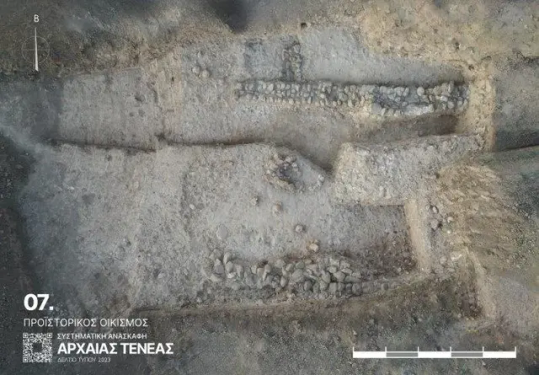
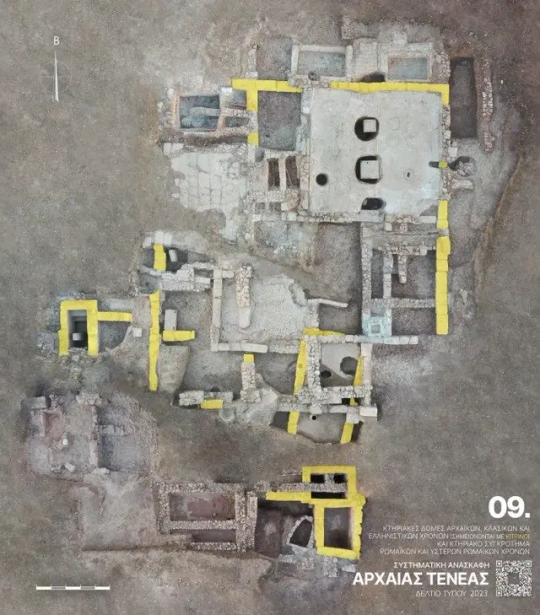
#Rare Coins and Treasures Discovered at Greece’s Ancient City of Tenea#Greece’s Ancient City of Tenea#silver#silver coins#ancient coins#ancient artifacts#archeology#archeolgst#history#history news#ancient history#ancient culture#ancient civilizations#ancient greece#greek history#greek art
48 notes
·
View notes
Text
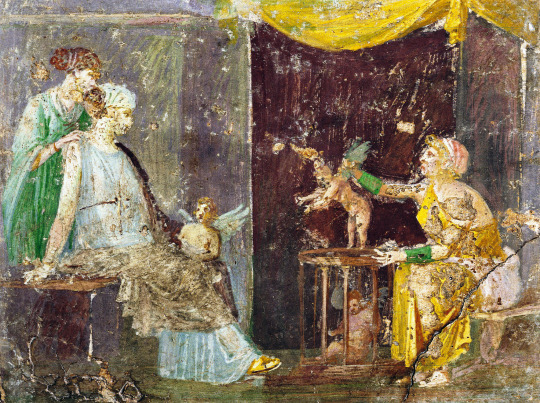
Fresco with a Cupid Seller, Roman, A.D. 1–50, found in the Villa di Arianna at Stabiae.
An Ancient Fresco
Cut from the wall of the luxurious Villa di Arianna at Stabiae, a coastal town south of Pompeii, this fresco depicts an older woman forcefully lifting a winged Cupid from a cage and offering it to a potential buyer. Since its discovery in the mid–1700s, this fresco has inspired numerous reproductions and adaptations.
257 notes
·
View notes